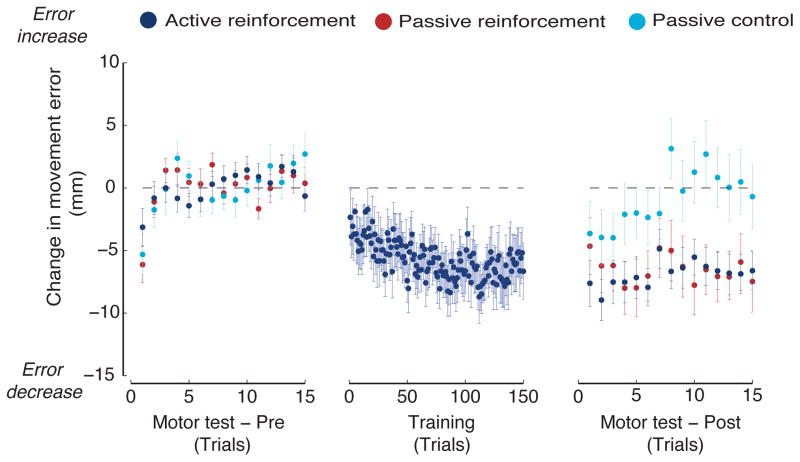Figure 3.
Passive movement paired with reinforcement (red circles) results in improvements in movement following training as great as those obtained for subjects who train with active movement and receive the same reinforcement (dark blue circles). The benefits of passive movement without reinforcement (light blue circles) are transient. The left panel shows baseline movements in the absence of feedback. The dashed line shows baseline performance prior to training. The middle panel shows training movements produced by subjects in the active reinforcement condition. Subjects in the other two groups experience the same movements passively (produced under position servo-control by a robot arm). The right panel shows movements following training, also in the absence of feedback or vision of the arm.

